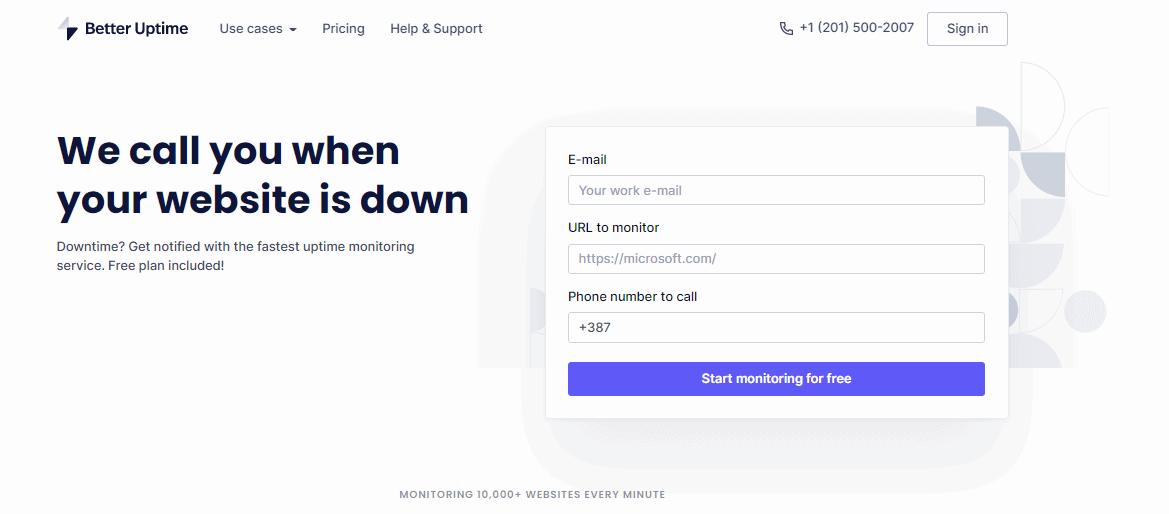Downtime, something that happens to almost every website, should that be a big one or a small one, it doesn’t matter.
Now, you might be asking yourself, “what does uptime monitoring even mean?”. Uptime monitoring is a practice that consists of constantly checking if your website is available and how long it takes for your website to load up. So if your website ever goes down due to some issue, you’ll be notified right away so it can be fixed as quickly as possible.
As soon as you search the web for uptime monitoring tools, you’ll get hit with a bunch of different websites offering a bunch of different services. In order to save you time, we’ll now recommend to you some of the best uptime monitoring tools that will make sure your website is never down.
Better Uptime
If you ask us, the best uptime monitoring tool is Better Uptime. If you’re wondering why you’ll get your answer in a second.
Better Uptime has lots of ways to alert you in case your website goes down, including SMS, phone call, or just a simple email – it’s all up to you.
If you are wondering about the price of this tool, thinking that it will break your budget – well, no worries. This beautiful tool has a price package for every type of owner, and the cheapest package starts at just $49.
Along with all of that, Better Uptime is very easy to configure, taking only 2 to 3 minutes to set up.
This tool has the ability to integrate with over 2000 apps, meaning that apps like Heroku, Datadog, Grafana, or Slack won’t cause any issues.
Better Uptime also gives you debug info every time an incident happens, so you’ll know exactly what was the problem and why your website crashed.
We could talk about Better Uptime for days, but it’s best if you check it out yourself – it is definitely worth it.
UptimeRobot
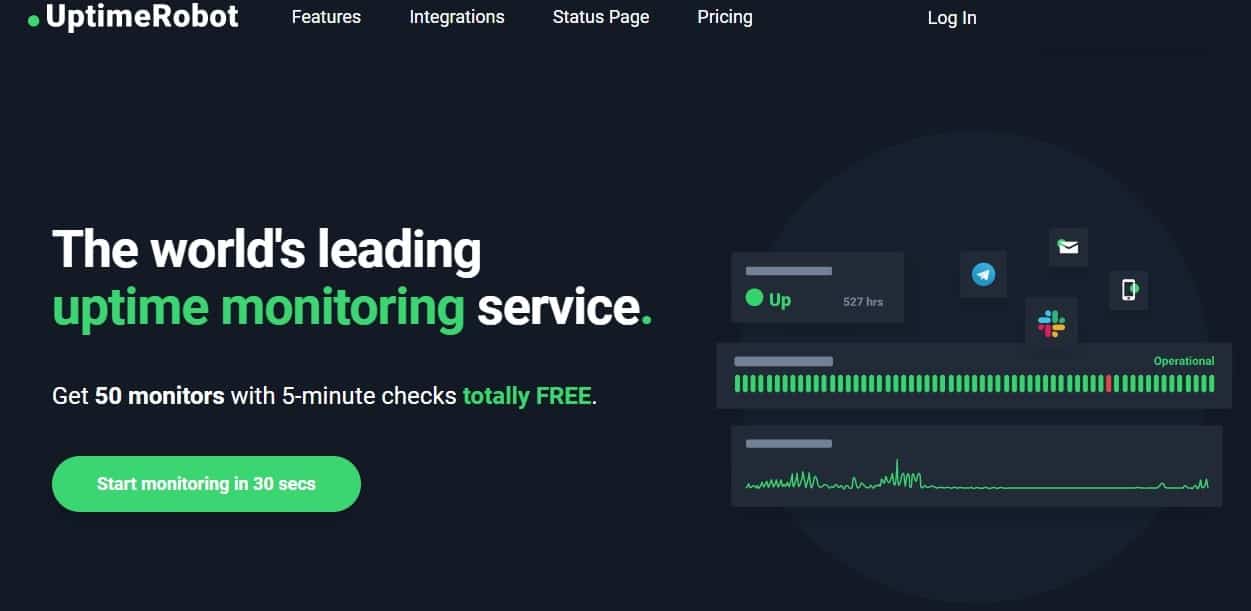
As its website says, UptimeRobot monitors everything that you care about on your website. The main thing it does – it monitors if your website is ever down, and it alerts you as soon as that happens. But there are more features besides that of course.
UptimeRobot also monitors your SSL certificate since we all know that no one likes a website with an expired one. For that reason, 30 days before your SSL certificate’s expiration, you’ll get a notification, so everything gets updated on time.
Besides that, this tool also monitors all ports, so if your email service is still running on port 587, you’ll be notified in a few seconds.
When it comes to pricing, UptimeRobot has 3 different plans targeting 3 different groups of users. The first plan is a free plan, which is always good and useful. And besides the free plan, there’s also a Pro plan and an Enterprise plan, both of which have their own useful features.
Pingdom
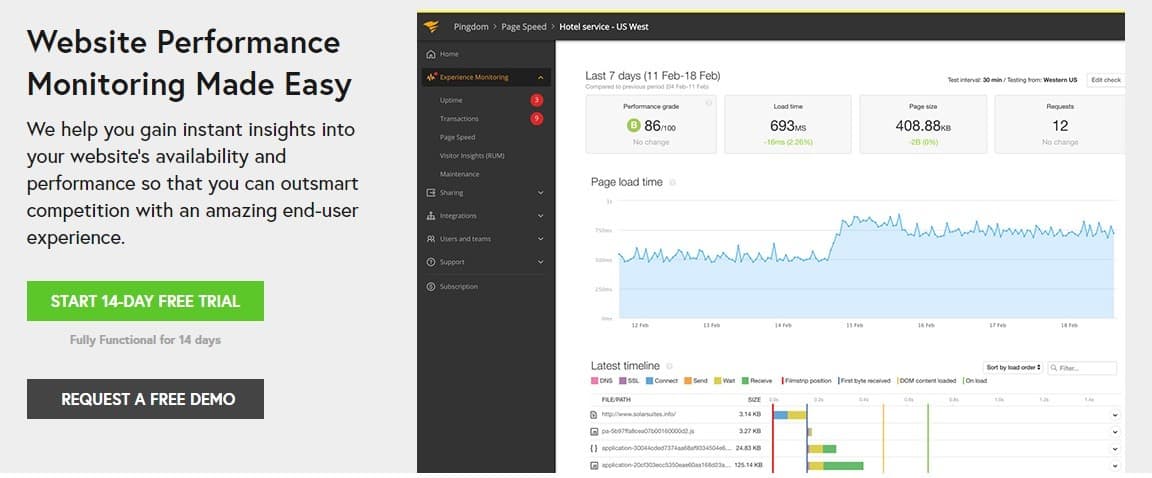
Pingdom is a bit more expensive when compared to other similar tools, but it claims to be totally worth the price, and we’re about to check that out.
Let’s start off by saying that Pingdom is used by some of the most popular websites out there such as Netflix, Github, Amazon, Twitter, Spotify, and lots more. But does that mean you should use it as well?
Pingdom sure is a trusted service used by many big companies, but it also comes at a different price. First off, there is no free package, but there is a 14-day free trial. So if you are on a tight budget, you should go for one of the services mentioned earlier.
Besides the basic features that Pingdom offers, such as uptime monitoring, page speed analysis, and transaction monitoring, it also offers something that we didn’t mention before – Real User Monitoring (RUM).
Real User Monitoring gives you info on how actual users all around the world are interacting with and experiencing your website, so you should definitely look into that.
PagerDuty
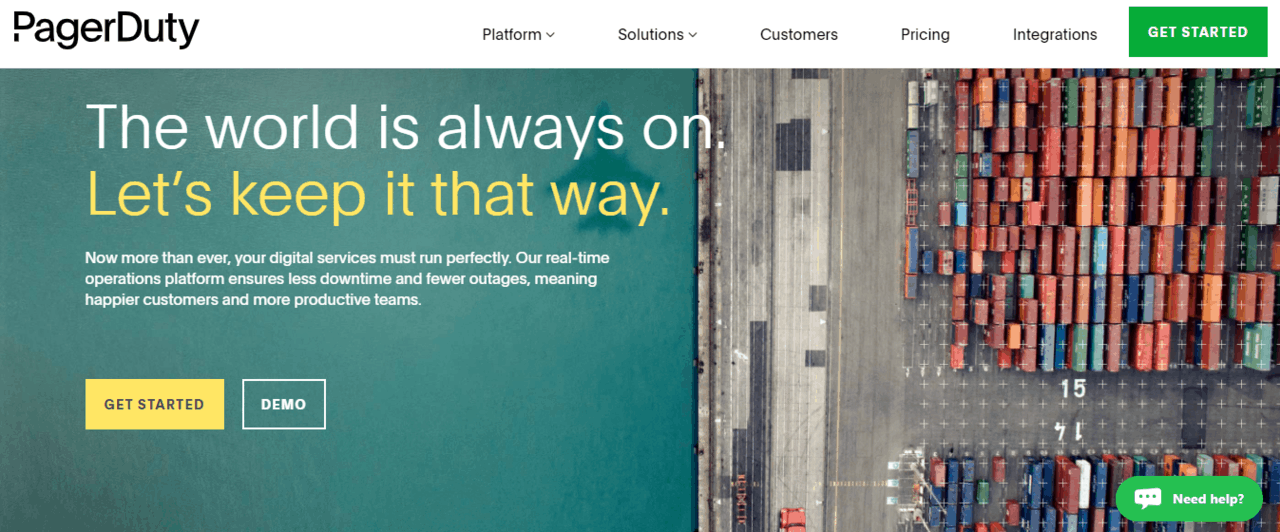
As their motto says, PagerDuty tries to do the best job at keeping the world always on, so everyone can enjoy their online life with no problems.
PagerDuty, just like the other tools that were mentioned earlier, offers some basic monitoring tools for a pretty low price, so let’s cover the main ones.
One of their main features, On-Call Management, makes it simple to distribute on-call responsibilities across your teams, meaning that you can schedule and organize very well, making sure that you reach the right people at the right time.
On top of that, PagerDuty also gives you the ability to “Understand the systemic impact of issues on your customers, teams, and bottom line.” with their Analytics feature, which is always a big plus.
There’s also the feature that’s probably needed the most, which is the visibility tab. This will give you a complete view of your data and operations in real-time, so you should definitely look into that.
PagerDuty comes in 4 different price plans starting at $0/month up to $39.
Statuspage
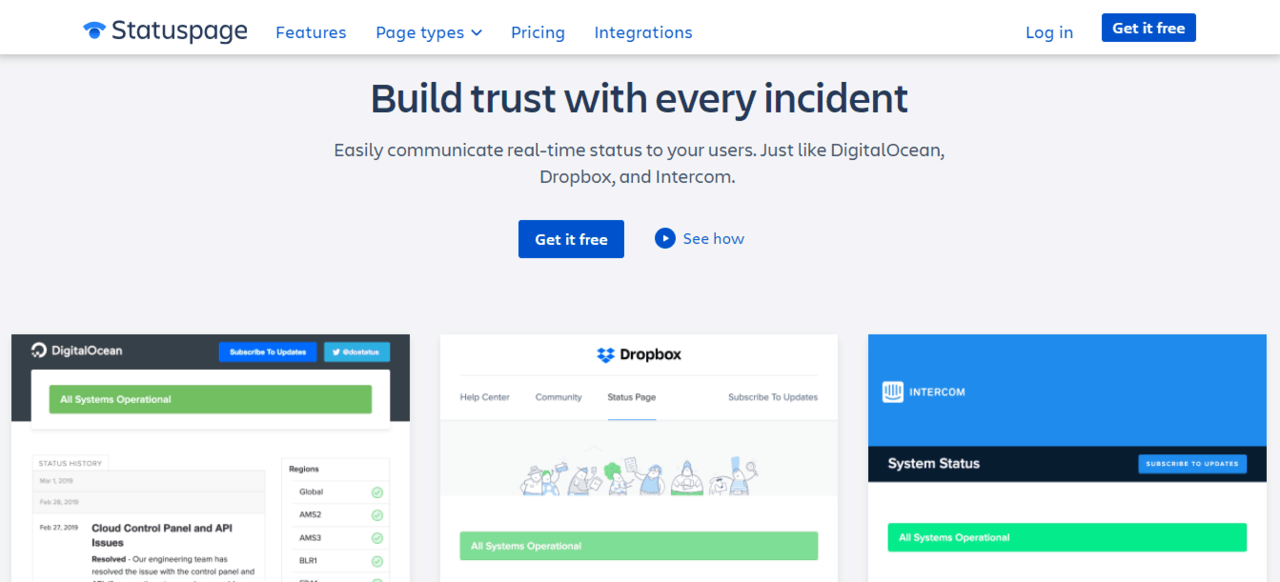
Statuspage claim that they are the #1 status and incident communication tool, but we’re not really sure about that. They do have some nice features, so let’s check them out.
For support teams, Statuspage does a good job of eliminating duplicate support tickets and clunky email lists, so you won’t have to worry about your email getting flooded with support requests during bad incidents.
On top of that, Statuspage also provides some nice features to DevOps teams like displaying the status of each part of your services, letting you control which components of your service you show on your page, along with some more good features.
Statuspage also helps incident response teams and marketing teams with their communication and historical uptime features, meaning that included in this tool there’s something for everyone in your company – that’s a big plus.
But all these features come at a price, and in this case, quite a big one. There is a free plan, but it only gives you some basic tools which will only cover smaller websites.
For bigger companies/websites, the monthly subscription to this service comes in at $1,500, meaning that they are targeting not just smaller businesses, but big ones too.
Conclusion
As we just saw, there are lots of different options available, each targeting a different group of users, and each offering different features, too.
In my opinion, the best service that offers lots of useful features for a good price would be Better Uptime. From a phone call when your website goes down to error logs that show you the exact reason your website went down, Better Uptime has it all – and for a low price, too.

